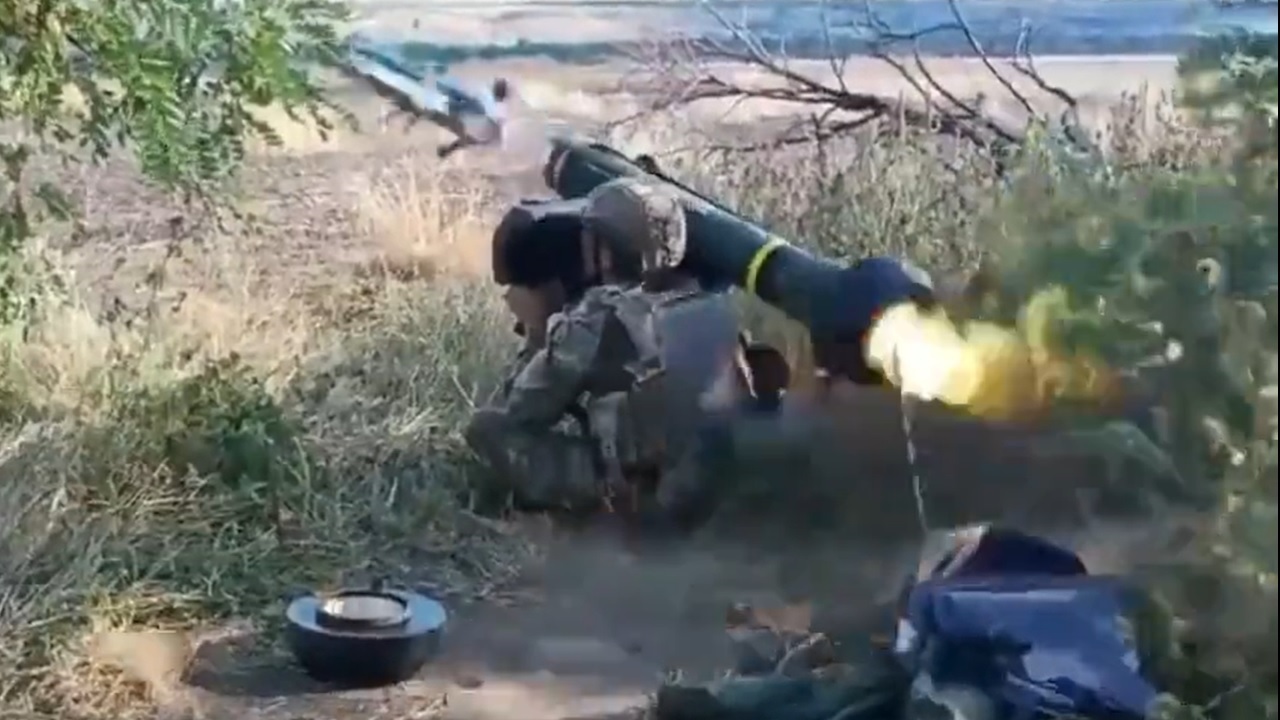Social media – time and time again – shows us in nearly real-time a war that has taken countless lives.
What will happen next?
While predicting a victor right now is hard, we can get vital clues on Twitter and other social platforms.
Twitter Shows Us the War in Ukraine: Javelin Attack
The War in Ukraine Presses On: Videos circulated on social media back in February that showed the destruction of at least two Soviet-era BMP-2 amphibious infantry fighting vehicles in recent fighting in Ukraine.
According to a post on Twitter, during a night attack on the positions of the 79th Brigade of the Ukrainian military, one of the Russian Army’s BMP-2s hit a mine, while the other was successfully targeted by an FGM-148 Javelin man-portable anti-tank launcher.
Ukraine Attack: What We Know
The tweet has been seen nearly many times since it was first posted – and it is just one of the dozens of videos that show Russian losses on the frontlines of Ukraine.
It is also not the first time that the BMP-2 has been the “star” of the show in such social media posts.
Last year, videos were widely circulated that showed the lightly armored vehicles destroyed after hitting anti-tank mines.
Since the start of the war a year ago, Ukraine has effectively deployed landmines to counter Russian forces and has forced the Kremlin’s armored columns into engagement areas where they could be vulnerable to man-portable anti-tank weapons such as the U.S.-made FGM-148 Javelin and British NLAW.
“That’s one of the reasons why you see column after column of Russian vehicles that are destroyed. So anti-tank or anti-personnel mines are very effective,” Army General Mark Milley, chairman of the Joint Chiefs of Staff, told the Senate Armed Services Committee last April.
Apparently, even after a year of fighting, the Russian military is still charging ahead with limited infantry support.
BMP-2 In the Spotlight
The BMP-2 (Boyevaya Mashina Pekhoty) is a second-generation, amphibious IFV that was first introduced in the 1980s, and improved upon the BMP-1 that had been first employed in the late 1960s.
The upgraded BMP-2 shares the same chassis and has almost identical road performance.
In the Soviet Army, BMPs were typically issued to the motor rifle battalions of tank regiments. It is employed in a similar role by the Russian Army.
The 14-ton tracked vehicle has a crew of three and can carry up to seven infantry soldiers.
Unlike with modern Russian tanks, the commander and gunner sit in an enlarged, two-man turret.
The BMP-2 is armed with a 30mm autocannon and 9M113M Konkurs (NATO reporting name (AT-5B Spandrel B) anti-tank missile launcher.
The vehicle’s welded steel armor provides all-around protection against 12.7 mm rounds.
However, it offers little protection from landmines – as noted in the recent videos! In addition, ammunition is often stored inside the crew compartment, which can lead to a catastrophic failure in case of a hull breach.
These issues had become apparent during the Soviet Union’s war in Afghanistan, but it appears little was done to address the design flaws.
As of last fall, Russia had lost at least 750 BMP-2s in Ukraine – with some 460 destroyed and around 230 captured.
Recent night attack on the positions of the 79th brigade of Ukraine, near Maryinka. One Russian BMP-2 hit a mine. The second BMP approached for evacuation, then it was destroyed by the Javelin.https://t.co/p2lZVAvI9s pic.twitter.com/jrVfULJDrQ
— Special Kherson Cat ???????????? (@bayraktar_1love) February 21, 2023
FROM 19FortyFive: The War in Ukraine Is About to Explode
FROM 19FortyFive: Does Putin Have Cancer?
Author Experience and Expertise
A Senior Editor for 19FortyFive, Peter Suciu is a Michigan-based writer. He has contributed to more than four dozen magazines, newspapers, and websites with over 3,200 published pieces over a twenty-year career in journalism. He regularly writes about military hardware, firearms history, cybersecurity, politics, and international affairs. Peter is also a Contributing Writer for Forbes and Clearance Jobs. You can follow him on Twitter: @PeterSuciu.

